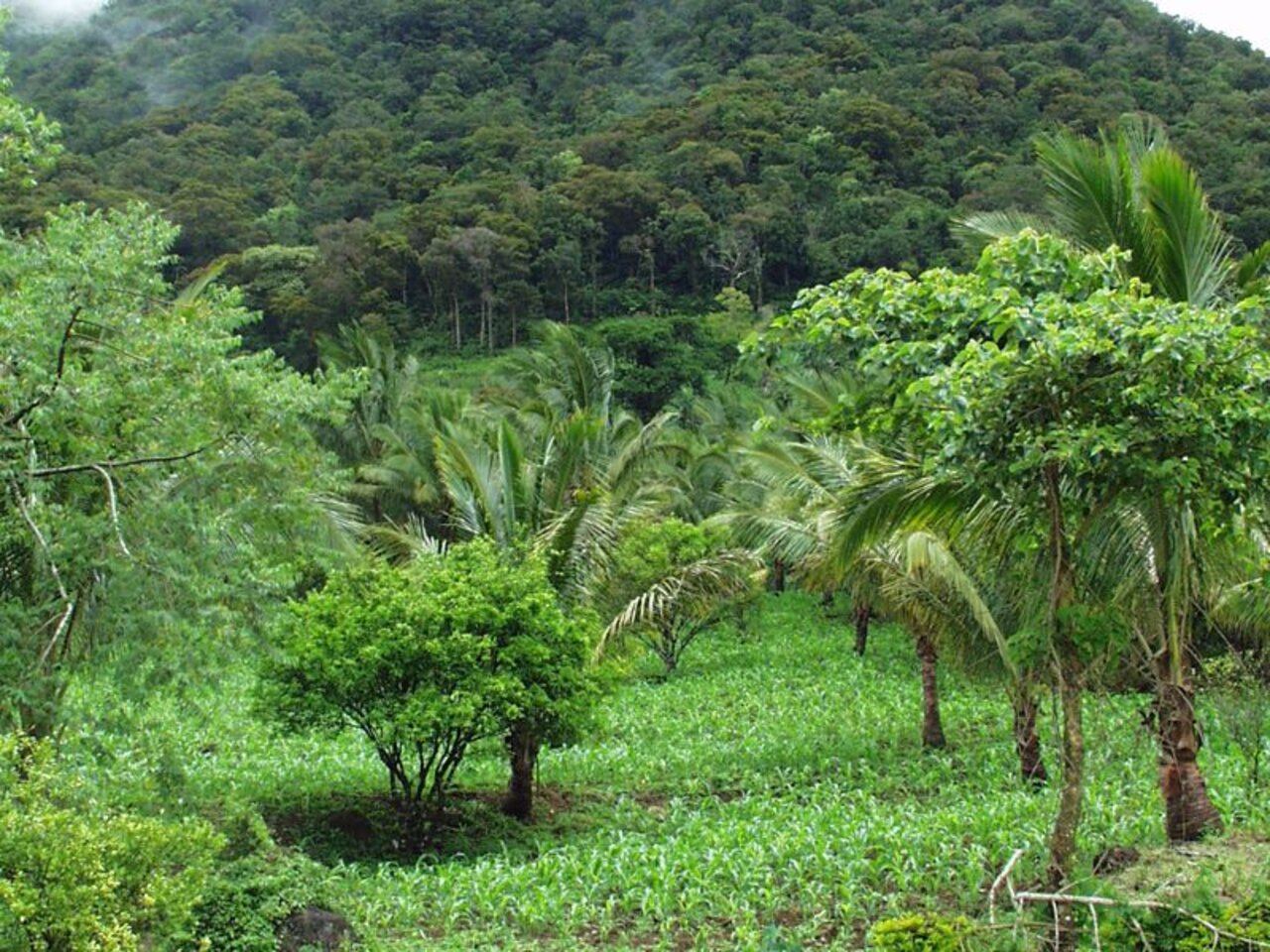Project
Agroforestry versus segregated land use

Environmental, economic and social impacts of agroforestry - Identifying the evidence base
The overall picture of available scientific evidence on agroforestry outcomes remains opaque. A systematic literature review helps to clarify the picture.
Background and Objective
Agroforestry is often seen as a panacea that offers multiple ecological, economic, and social benefits. In practice a wide diversity of existing agroforestry practices, outcome indicators, and geographical locations is given. Accordingly, research only provides a variety of individual findings and case studies. The overall picture of available scientific evidence on agroforestry outcomes, however, remains opaque. To clarify whether and in which areas the research landscape allows conclusions to be drawn about the potential benefits or drawbacks of agroforestry compared to other land uses, the literature is systematically searched for eligible articles. The aim of the project is to answers the question whether there is a solid evidence base that allows to draw generalized conclusions on the environmental, economic, and social impacts of various agroforestry practices.
Target Group
Policy, science
Approach
Es wurde eine systematische Überprüfung der Literatur nach dem "RepOrting standards for Systematic Evidence Syntheses" (ROSES) Ansatz durchgeführt. Auf der Grundlage einer systematischen Literatursuche und eines Screenings von 2.164 Artikeln identifizierten wir 64 systematische Übersichtsartikel und Metaanalysen, die ökologische, wirtschaftliche oder soziale Auswirkungen der Agroforstwirtschaft im Vergleich zu einer Kontrolle zusammenfassen. Die identifizierten Artikel wurden kritisch bewertet und ihre thematische und geografische Abdeckung wurde kartiert, um Dichte und Forschungslücken in der Evidenzbasis zu identifizieren.
In einem ersten Schritt wurde eine Evidence Gap Map (EGM) erstellt, um zu klären, ob und in welchen Bereichen die Forschungslandschaft Rückschlüsse auf mögliche Vor- oder Nachteile der Agroforstwirtschaft im Vergleich zu segregierten Landnutzungen zulässt und wo Lücken bestehen. In einem zweiten Schritt werden die Ergebnisse systematisch überprüft.
Data and Methods
Literature
Systematic Review, Evidence and Gap Map
Our Research Questions
In a first step the project answers the question of whether there is a solid evidence base that allows to draw conclusions on the environmental, economic, and social impacts of various agroforestry practices. For which agroforestry systems and practices have systematic reviews been published that assess their impact on environmental, economic and social outcomes in comparison to a segregated land use? Which geographical locations were covered by the published literature? And are existing review studies transparent and comprehensible in their selection of literature? Where exist research gaps?
In a second step the question is answered whether agroforestry has positive, negative or neutral impacts on specific environmental, economic and social outcome indicators compared to other land uses.
Results
A systematic review map about ecological, economic, and social outcomes of agroforestry in comparison to segregated land use was created based on an intensive systematic review of meta-analyses and systematic reviews. The Evidence Gap Map discloses topics which were researched intensively, such as ecological effects related to climate change, water, biodiversity, soil and pest/disease control, as well as productivity aspects of individual agrisilvicultural practices or agroforestry systems when considering an aggregate level. Research gaps were identified, e.g. for individual silvopastoral and agrosilvopastoral practices, and for social outcomes of all agroforestry practices. Reference is made to diverse environmental, economic, and social impacts, diverse agroforestry systems and practices, geographic coverage, and the quality of existing studies. Such a comprehensive overview was not available before.
The results of the evidence mapping highlight further research needs, but also urge for caution in making generalized statements about the benefits of agroforestry for policy design or land use planning.
- Project brief 2022/34a (EN) Margret Köthke
DOI:10.3220/PB1662472311000
Thünen-Contact

Involved Thünen-Partners
Duration
4.2020 - 12.2022
More Information
Project status:
finished
Publikationen
- 0
Köthke M, Ahimbisibwe V, Lippe M (2022) Gibt es gesicherte Erkenntnisse über die Auswirkungen der Agroforstwirtschaft? Hamburg: Thünen-Institut für Waldwirtschaft, 1 p, Project Brief Thünen Inst 2022/34, DOI:10.3220/PB1662471847000
- 1
Köthke M, Ahimbisibwe V, Lippe M (2022) Is there robust evidence on the impacts of agroforestry? Hamburg: Thünen Institute of Forestry, 1 p, Project Brief Thünen Inst 2022/34a, DOI:10.3220/PB1662472311000
- 2
Köthke M, Ahimbisibwe V, Lippe M (2022) The evidence base on the environmental, economic and social outcomes of agroforestry is patchy - An evidence review map. Front Environ Sci 10:925477, DOI:10.3389/fenvs.2022.925477
- 3
Köthke M, Ahimbisibwe V, Lippe M (2021) Dataset for an evidence review map on agroforestry outcomes [Datenpublikation] [online]. 1 Excel-Datei, 1 PDF-Datei. Göttingen: Open Agrar Repositorium, zu finden in <https://www.openagrar.de/receive/openagrar_mods_00075399> [zitiert am 09.11.2021], DOI:10.3220/DATA20211109081609








